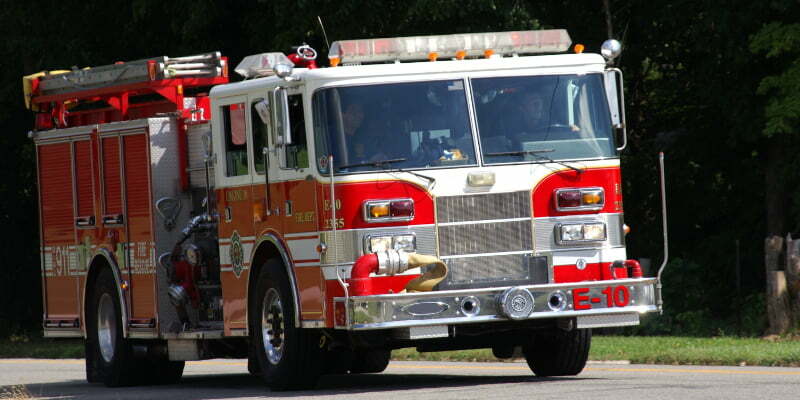There is no set time of day for when an emergency call will come, nor will these calls only happen on clear, sunny days. Because of this fact, fire apparatus operators, emergency vehicle drivers, fleet managers, and chief officers must be armed with an understanding of the unsafe driving conditions they may encounter while responding to an emergency incident; bad weather, driving at night, driving while distracted, fatigued, or DUI. In the event of a crash, a fire apparatus operator should also know injury prevention methods to lessen the severity of the crash.
Course Type: Full-length Course
Course Duration: 60
Vehicle dynamics are important for fire apparatus operators and emergency vehicle drivers to avoid unnecessary risks while operating the vehicle. What happens when a larger apparatus rounds a curve too quickly, factors that affect the total stopping distance of the rig, and how kinetic energy plays a part in it all are part of the dynamics a driver and passenger of these apparatus face on each call they drive to. Understanding these effects will benefit all on board, making for an easier and safer drive whenever you are behind the wheel.
Course Type: Full-length Course
Course Duration: 60
When driving any vehicle, the driver must keep in mind the basic safety rules of the road and the vehicle they are operating. When it comes to driving an emergency vehicle there are even more topics to consider to maintain the safety of the driver, the passengers on board, and those around them on the road. This course will review safety topics on how to navigate an intersection during an emergency run where civilian vehicles may not hear the sirens of the apparatus, tire related maintenance to avoid unnecessary risk, skid control, ways to prevent rollover, and safe maneuvering of railroad crossings.
Course Type: Full-length Course
Course Duration: 60
Avoiding liabilities is an important act for not only chief officers, but apparatus operators, and emergency vehicle drivers. To best accomplish this it is important understand how to safely operate the vehicles in the fleet. Starting with safe drivers will lead to less accidents and issues later and avoid the unwanted outcomes that could come along with negligent acts.
Course Type: Full-length Course
Course Duration: 60
Understanding the laws and liabilities that can affect emergency vehicle drivers is the first step in preventing unnecessary risk. In this course, we will explain the laws and liabilities related to the safe operation of an emergency vehicle and how to avoid unnecessary charges in the event of a lawsuit.
Course Type: Full-length Course
Course Duration: 60
The NFPA has a set of standards set forth to be followed when creating driver training courses, selecting an instructor for these courses, and the guidelines for the safe operation of an emergency vehicle. This course outlines these standards to provide emergency responders with an understanding of the requirements for all members and those selected to deliver driver training instruction. Following these standards will lead to the safe operation of vehicles because the trainers will have been hand-selected following a list of requirements and trained well enough to pass the instruction on to others.
Course Type: Full-length Course
Course Duration: 60
Firefighting often requires unique tactics to accomplish fire suppression or emergency response mission. As part of these unique tactics, specialized vehicles may be needed to reach a fire or accomplish a goal. This lesson will discuss some issues associated with driving and operating certain specialized vehicles.
Course Type: Full-length Course
Course Duration: 60




